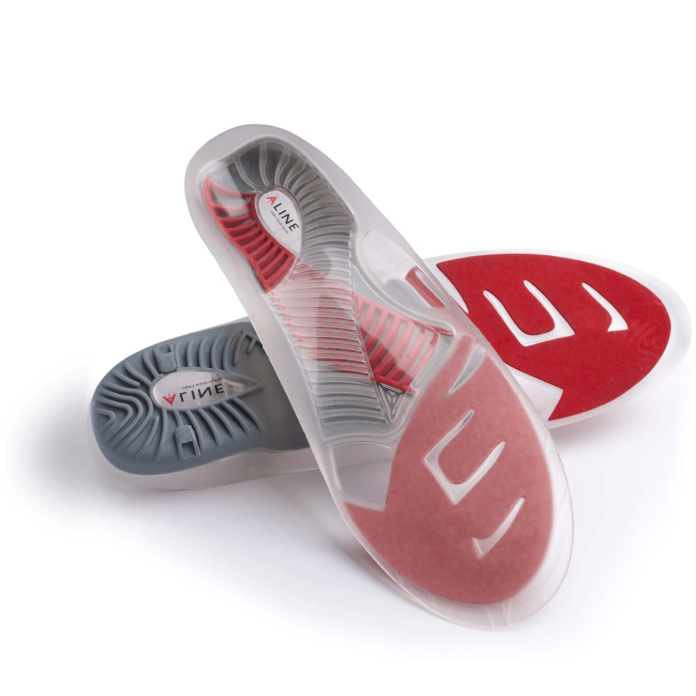Choosing the right insoles can significantly affect comfort, performance, and overall foot health. Aline Insoles and Superfeet are two well-known brands offering premium foot support, but how do they compare when it comes to insulated insoles? In this article, we will explore the features, benefits, and differences of these brands to determine which one might be the better choice for your needs.
Material and Construction
Aline Insoles are designed with a focus on biomechanics, ensuring proper alignment and foot stability. They use a unique thermoplastic construction that adapts to movement while maintaining durability. Superfeet, on the other hand, incorporates high-density foam and a reinforced stabilizer cap for added structure. While both brands offer insulation for colder conditions, Aline Insoles tend to provide more flexibility and shock absorption, making them ideal for dynamic activities.
Support and Stability
Support is a crucial factor when choosing insoles, especially for those who spend long hours on their feet. Aline Insoles are engineered to promote natural foot motion and proper posture. They feature a deep heel cup that enhances stability and reduces stress on joints. Superfeet insoles also provide structured support but with a more rigid design that may not suit all users. Those seeking a balance of support and mobility may find Aline Insoles to be the better option.

Comfort and Cushioning
Comfort plays a significant role in determining the best insole for everyday wear. Aline Insoles are designed with responsive cushioning that adapts to foot pressure, offering a comfortable experience throughout the day. Superfeet insoles provide a firmer feel, which may be beneficial for those needing extra arch support. However, individuals looking for a more adaptive and cushioned experience may prefer Aline Insoles, especially in colder conditions where flexibility is essential.
Performance in Cold Weather
Insulated insoles are particularly useful in winter conditions, where warmth and comfort are priorities. Aline Insoles integrate thermal properties that help retain heat while maintaining breathability. Their dynamic design prevents stiffness, allowing natural movement even in freezing temperatures. Superfeet insoles, while also offering insulation, are more rigid and may not provide the same level of adaptability in cold environments. This makes Aline Insoles a preferred choice for those seeking warmth without compromising flexibility.
Durability and Longevity
Both Aline Insoles and Superfeet are built to last, but their durability depends on usage and material quality. Aline Insoles utilize reinforced construction that withstands high-impact activities while maintaining their shape. Superfeet insoles, known for their dense foam material, also offer longevity but may compress over time. Those engaging in high-performance activities may find Aline Insoles to be a more durable option due to their ability to retain structure and support.
Arch Support Comparison
Arch support is a major consideration for individuals with foot conditions such as flat feet or high arches. Aline Insoles provide a more customized arch contour that adapts to various foot shapes. Their design promotes even weight distribution, reducing pressure points. Superfeet insoles, while offering structured arch support, may feel too rigid for some users. For those needing adaptable support that moves with the foot, Aline Insoles may be the better choice.

Moisture Management
Keeping feet dry is essential, especially when using insulated insoles in colder climates. Aline Insoles incorporate moisture-wicking materials that prevent sweat buildup, reducing the risk of discomfort and odor. Superfeet insoles also offer moisture control, but their denser foam structure may trap heat, leading to potential overheating. Aline Insoles strike a balance between insulation and breathability, making them more effective for long-term wear in various conditions.
Shock Absorption Ability
Shock absorption is crucial for reducing strain on joints and preventing foot fatigue. Aline Insoles feature a dynamic shock-absorbing system that disperses impact evenly. This is particularly beneficial for athletes and individuals engaged in high-impact activities. Superfeet insoles, with their firmer composition, provide adequate cushioning but may not offer the same level of impact distribution. Those looking for enhanced shock absorption and foot comfort may prefer Aline Insoles.
Customization and Fit
A well-fitted insole enhances comfort and prevents foot issues. Aline Insoles are designed with a semi-custom fit, allowing them to conform to the shape of the foot over time. This makes them suitable for individuals with specific foot needs. Superfeet insoles offer a structured fit, but their rigid design may not accommodate all foot shapes comfortably. Aline Insoles provide a more adaptable solution for those seeking personalized comfort.
Suitability for Different Activities
Different activities require different levels of support and flexibility. Aline Insoles are versatile, catering to athletes, workers, and casual users alike. Their responsive design makes them ideal for high-motion activities such as running, cycling, and hiking. Superfeet insoles, with their firmer support, may be better suited for static activities where rigid stability is required. Those looking for a multipurpose insole may find Aline Insoles to be the superior option.
Conclusion
When comparing Aline Insoles to Superfeet, it is clear that both brands offer high-quality solutions for foot support. However, Aline Insoles stand out due to their adaptability, shock absorption, and insulation properties. Their ability to maintain warmth while providing flexibility makes them a top choice for various conditions. Whether for sports, work, or everyday use, Aline Insoles delivers a balance of comfort and support. Those seeking the best heat moldable insoles may find Aline Insoles to be the ideal solution for their needs.






























